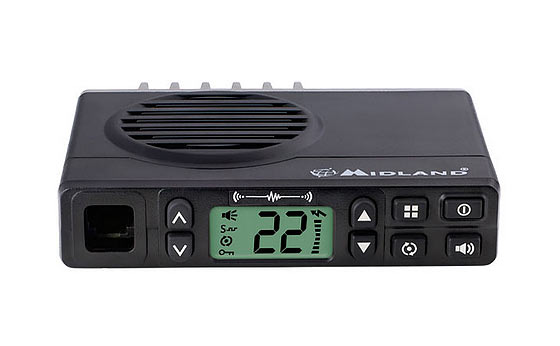2-Way Radios For Pre & Post SHTF Local Communications


(Midland GMRS ‘base’ or ‘mobile’ 2-way radio)
2-way radios (walkie-talkies) do not require a working infrastructure as do cell phones (antenna towers, network service providers, power-grid, a paid service plan).
A set of 2-way radios ‘just works’.
The only thing a 2-way radio needs is a charged battery.
2-way radios may have their limits on how far they will transmit and receive. However there are some that are perfect for local communications while serving a wide variety of purposes.
We have been using GMRS 2-way radios here at the homestead for awhile now. They’ve been great! (GMRS stands for General Mobile Radio Service).
Since it’s just Mrs.J and I, whenever either of us goes out somewhere on the property, we ALWAYS bring a 2-way radio. It’s not only convenient for normal communications, but you just never know when an emergency situation may arise.
I also always keep a set of handheld 2-way radios in the truck for ‘just in case’.
Here’s a bit more about GMRS radios… A ‘Base station’ concept (and base antenna), handhelds, and why I like GMRS for local general purpose communications
CHOICES
There are several choices when it comes to choosing the best type of 2-way radio for local communications.
In short, there’s MURS, FRS, GMRS, and CB radio.
I’m not going to get too technical about it. But each of these types of radios operate on different frequency bands. Each have their pros and cons. I feel that GMRS is the best for ‘local’ communications, especially given that these radios can operate up to 5 watts power.
‘LOCAL’
What do I mean by ‘local’ communications? I’m talking about a range within just several miles or less.
Again without getting into potentially boring technical reasons (although I find it interesting ;) ), there are many factors which affect range.
GMRS is ‘line of sight’ (from one radio to the other) although it will transmit through forest, buildings, some terrain, etc., to an extent depending on terrain density. I won’t go deeper into it than that. So just know that I’m talking about communications within several miles (although you can go hilltop to hilltop up to 20 miles or thereabouts, depending.).
Handheld and ‘Base Station’ GMRS radios
I have had handheld GMRS 2-way radios for years. They work well.
With that said, a radio designed as a ‘base station’ may offer some attributes that potentially make it more powerful.
Their electronics may be better designed (although not always). More importantly they can be paired up with a better antenna which enables the radio to reach out further than a handheld.
For example, the following GMRS radio although designed to mount in a vehicle, serves well as a base station for inside the house (use with an upgraded external antenna).
Midland MXT100 GMRS 2-Way Radio
The radio being designed for the vehicle will require a 12-volt DC power connection. Alternatively for inside the home you simply need a small 12 volt DC power supply. Example:
70W 12V AC to DC Power Converter
Note: I really like the simplicity of this radio. However (tech alert), it does not have ‘repeater’ capability (Duplex mode) (See the next note). But that’s okay with me since I’m only using this type of radio for local communications.
Note: Some GMRS radios include ‘repeater’ functionality that enables you to transmit further by way of repeater stations which ‘repeat’ your signal by first receiving your transmission and then re-transmitting it from the repeater location (typically located in high spots like tops of mountains, buildings or towers.). There’s more ‘technical’ description, but I’ll leave it at that.
GMRS Base Station Antennas
While a handheld GMRS radio typically has an attached short ‘rubber ducky’ antenna (a short whip), an antenna can be a factor that can increase your range.
A ‘base station’ type radio will enable you to choose your own external antenna which may have characteristics that increase your range. Additionally by increasing the height of your antenna (mounting it up high), you can improve the distance your signal radiates.
There are a number of GMRS base station antennas which are designed for this specific frequency range. One popular and relatively low cost GMRS antenna with 6.5 db gain is the…
Tram 1486 UHF Land Mobile Base Antenna
Additional considerations will be procuring the coax cable between the radio and the antenna, mounting it (e.g. to the house via a pole and mounting brackets), making a feed-through from the inside to the outside of the house, fine tuning the antenna,…
HANDHELD GMRS 2-WAY RADIOS
There are LOTS of these radios out there. Some more simple to operate than others.
Years ago I purchased several pairs of the following handheld GMRS radios. They’re stilling going strong today with lots of use and abuse…
Midland GXT1000VP4 FRS/GMRS Two-Way Radio (Pair)
A very popular and highly rated 2-way radio:
BaoFeng UV-5R Dual Band Two Way Radio
Uses for GMRS 2-way radios
Camping and keeping your group in communications with each other
Great for large properties and farms
Local neighborhood communications
vehicle to vehicle travel
Security watch/patrol
Hiking
?
DOES GMRS REQUIRE A LICENSE?
Technically, GMRS does require a license from the FCC to transmit, and transmitting power is allowable up to 5 watts. However in 2010, the FCC proposed to remove the individual licensing requirement for GMRS and instead license GMRS “by rule” (meaning that an individual license would not be required to operate a GMRS device). This proposal is still pending. In practice, hardly anyone uses a license on this band due to its consumer popularity…
